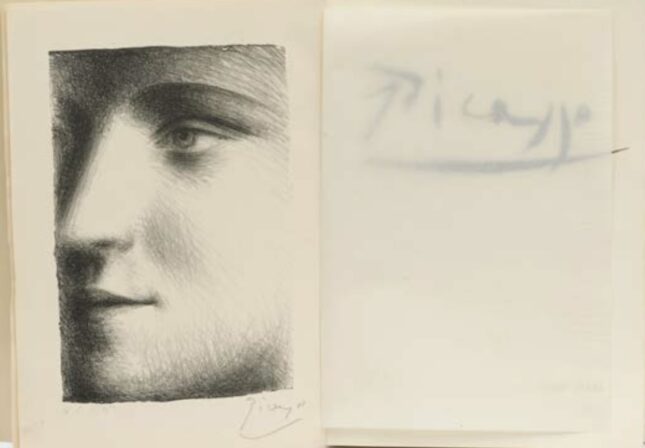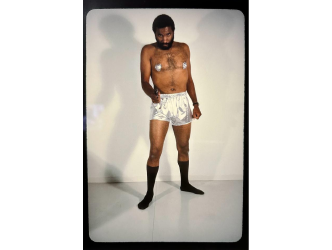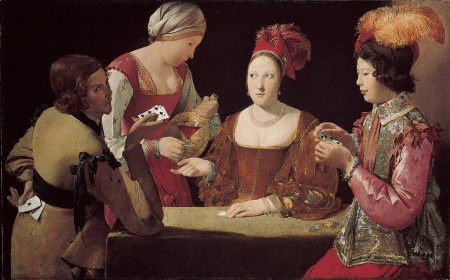Vulgar money
For a long time money had a sulphurous smell as far as art historians were concerned; a vulgar reputation that prevented them from examining the artist’s preoccupations and market. People just liked to talk about the genius creators who sacrificed and suffered in poverty.
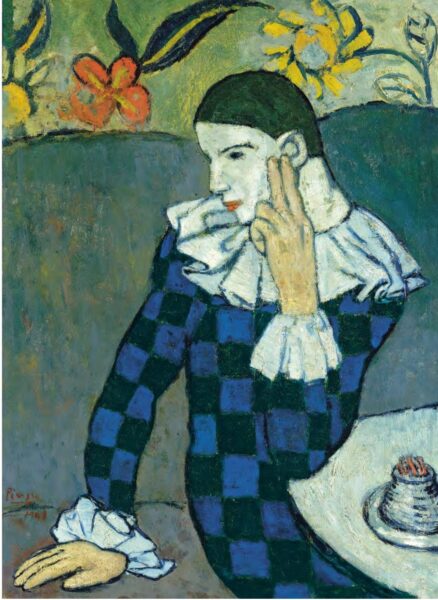
Paul Guillaume, Leonce Rosenberg
But for a few years now the stories linked to the dealers, collectors and even the auctions themselves have come to the fore, reaching as far as the museums. On 15 January an exhibition on Modigliani and his first major dealer, Paul Guillaume, came to a close at the Musée de l’Orangerie in Paris (See the report here). Also in Paris, until 19 May, the Picasso Museum is attempting to reassemble the collection of a 1920s art dealer, Léonce Rosenberg (We’ll speak soon about this exhibition).
A lion over his market
If there was one artist in the 20th-century who reigned like a lion over his market it was surely Pablo Picasso. He multiplied his relationships with galleries without ever giving them exclusivity and he even oversaw exhibitions dedicated to him that played in his value’s favour, in museums abroad from 1932. The goal? To never suffer from poverty. You could say the Malaga native’s rapport with the market set a precedent.
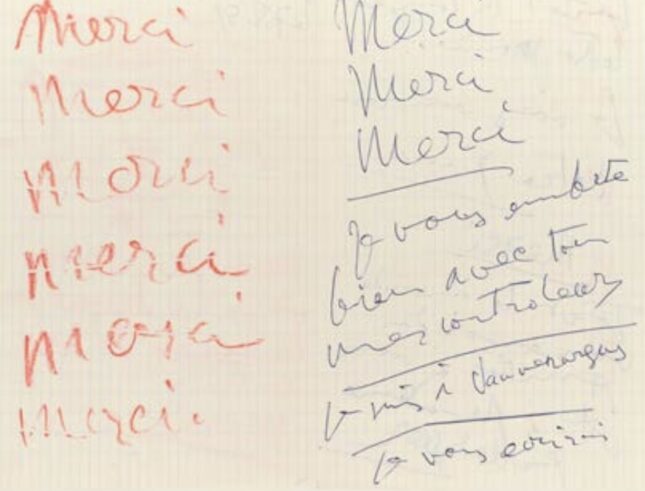
A foreigner called Picasso
As historian Annie Cohen-Solal writes in her remarkably well-documented book, “Un étranger nommé Picasso” (A foreigner called Picasso) (1), having once been utterly destitute, from 1914 Picasso became a wealthy man. Beautiful cars, beautiful houses… He went on to lead a lavish lifestyle while spending the majority of his time painting.
La Peau de l’Ours
1914 was a remarkable year for Picasso in various respects. In March that year, before the outbreak of war, an auction took place at Hôtel Drouot with an unusual name: “La peau de l’ours” (The Bearskin. An allusion to the French proverb: don’t sell the bear’s skin before you’ve killed it). I published a book in French last October which features a chapter on the subject, the first speculative operation on cubism (2).
Financial speculation
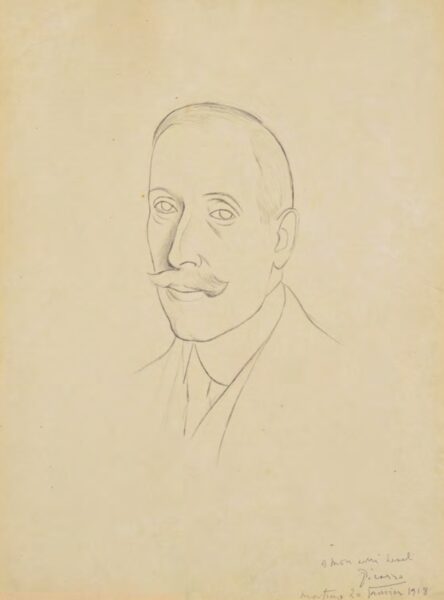
It was organized by André Level (1863-1947), a very shrewd banker who doubtless also had a keen eye for the avant-garde. From 1903 he started to gather together modern paintings (Picasso then Matisse etc) funded by eleven participants. 144 lots by 44 artists were sold in 1914 with a resounding success, for prices that far exceeded the initial investment. It was the first time that fauvist and cubist artworks, which were relatively daring for the time, were the subject of a financial operation.
Max Pellequer
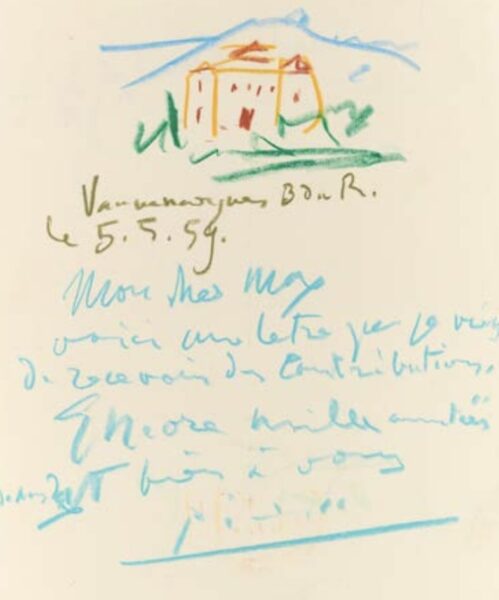
It was also in 1914 that Level introduced Picasso to his niece’s husband, businessman Max Pellequer, founder and director with his brother Raoul Pellequer of the Banque Nationale du Commerce et de l’Industrie. Max would later go on to play a fundamental role in the painter’s life. From 1926 he took care of Picasso’s financial interests for many years.
Annie Cohen-Solal
“He was a real minister of finance who made Picasso rich, very rich,” explains Annie Cohen-Solal. In New York until 10 February, Gagosian gallery was presenting an exhibition of museum quality under the guidance of Annie Cohen-Solal, which addresses in the first room the subject of Picasso’s banker. It was displayed in another form in Paris at the Musée de l’Histoire de l’Immigration in 2022 (See the report about the exhibition here).
100 Picassos
“A Foreigner Called Picasso” brings together around one hundred works, only a third of which are for sale (between 14,000 dollars for ceramics and several million). And with good reason… The Metropolitan Museum, Moma in New York and the Beyeler Foundation, along with many other institutions, have loaned paintings for this impressive show. It features, among others, a portrait drawn of André Level taken from a private collection, since one of the rooms is dedicated to the “Peau de l’ours” period.
Picasso, a millionnaire
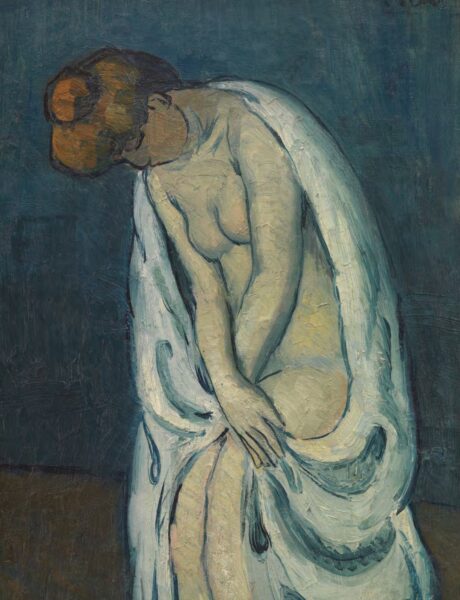
The book accompanying the show goes into detail about the banker’s role. “It is noted that Pellequer saw the equivalent of 850,000 francs pass into Picasso’s accounts (…) he would make the man of the ’Bateau Lavoir’ into a millionaire.” And elsewhere: “Pellequer provided services, Picasso provided artworks.” We read for example, from the banker’s pen, “I am thinking about my painting from the blue period, I have dreamed about it for years.” Today it is the Picasso Museum that possesses “La Célestine” (Celestina), the famous monochrome portrait of a woman with an injured eye which belonged to Pellequer. It is also the Picasso Museum that has in the institution’s possession the vast correspondence between the manager of Picasso’s fortune and the painter: 798 letters.
Picasso’s Cézanne
The Metropolitan Museum website also dedicates a note to Pellequer, pointing out that the banker was not above selling certain works from his own collection, including a painting by Cézanne that he sold to Picasso.
Piasa auction house
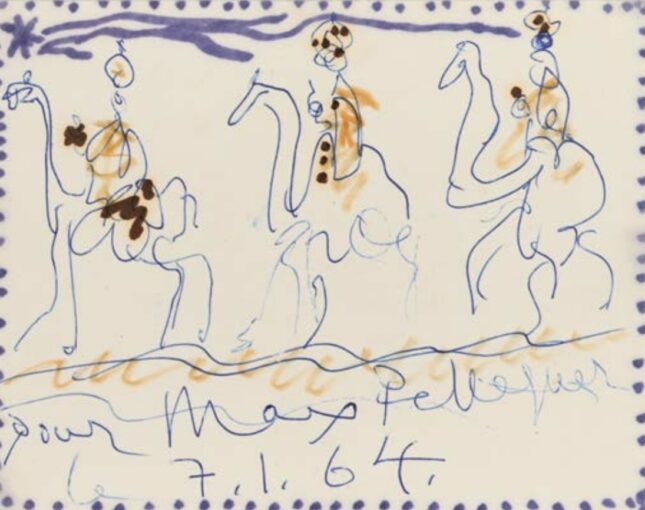
Coincidentally, on the other side of the Atlantic in Paris, on 15 February the Piasa auction house is presenting at its space in Faubourg Saint Honoré a collection of letters, books, drawings, manuscripts and bronzes that belonged to the same Max Pellequer.
Miraculously, this group of works by Picasso was preserved and sold to a friend of Pellequer. They are reunited today at auction in Paris. This is explained by Fabien Bejean, who is overseeing the sale at Piasa, and gives the ensemble of 49 lots an estimate of two million euros.
Picasso’s finance minister
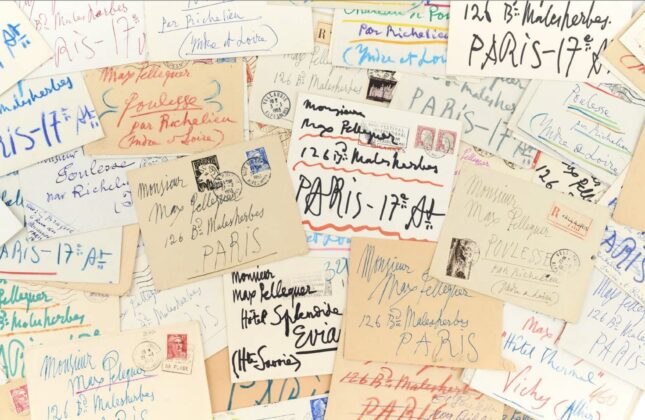
Observing Picasso’s dedications to his “finance minister” we learn he harboured true affection for him. For the sale’s manuscripts expert, Philippe Luiggi, “there are very few letters by Picasso that have appeared on the market. Moreover, demand for the artist’s letters has a wider circle than for classical manuscripts. They have never been presented for sale, an important detail for art lovers, and they are – to my knowledge – unprecedented.”
A letter to Max Jacob
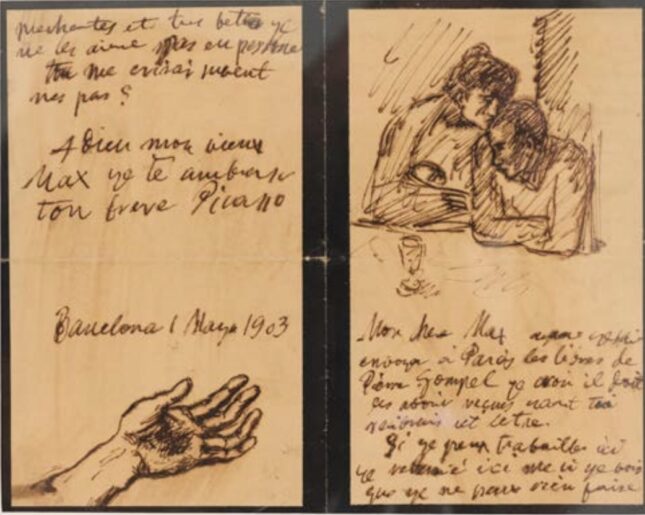
The lot with the highest estimate (500,000 euros) dates from Picasso’s early years in Paris, 1903. It is addressed to his friend, the poet Max Jacob. At the time the painter was still mixing French and Catalan in his writing. They shared a powerful bond. The letter is signed off with: “Your brother Picasso”. He accompanies these words with four drawings, one of which is a study for a painting from his blue period, “Pauvre couple dans un café”, which is now at Norway’s National Art Museum.
Harlequin is Picasso
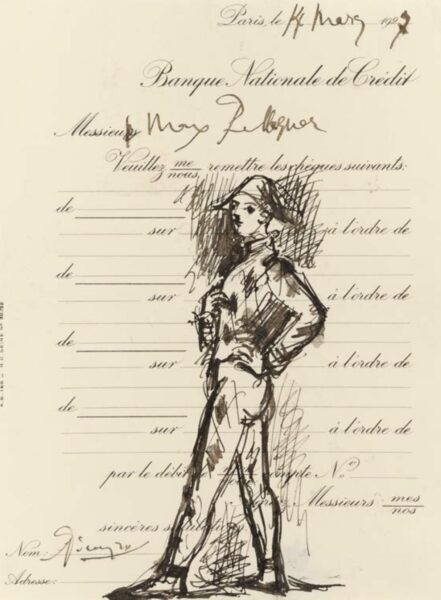
The catalogue presents many documents that have been scribbled all over by Picasso, with estimates that are low in light of the painter’s renown.
In 1927, on headed paper from the Pellequer’s bank, Picasso has drawn a harlequin in Indian ink, which historians consider to be the artist’s mischievous double (estimate: 10,000 euros). In 1957 he sketched on one side of paper the Château de Vauvenargues near Aix-en-Provence, where he lived at the time, and on the other an entire page filled with large “MERCI”s followed by: “I annoy you with all my officers” (estimate: 4000 euros) or another with a beach view in coloured pencil (estimate: 6000 euros).
Two sculptures by Picasso
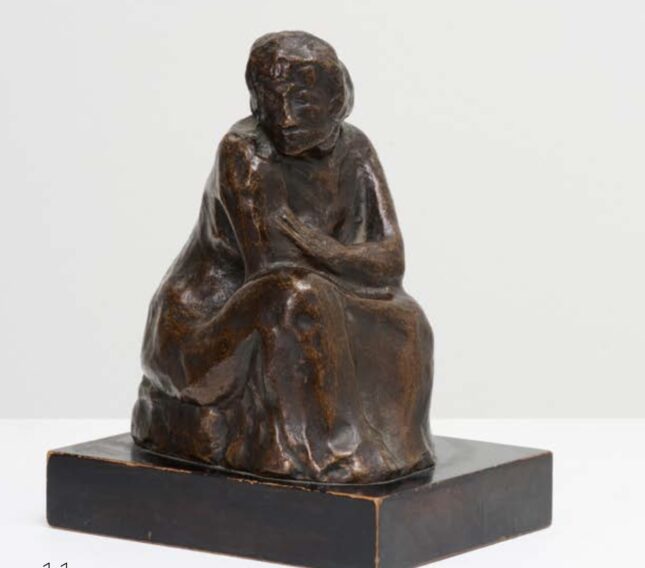
In 1956 it was a wine bottle that inspired him (estimate: 2000 euros). In 1964 he depicted the Three Wise Men to accompany his words (estimate: 6000 euros). Picasso also made the banker’s ex-libris in two versions. The copper engraving which serves as the plate for this mark of the collector, dated from 1930, is presented with an estimate of 1000 euros. The sale also contains two bronzes, including a “Femme assise” in an expressionist style. The model was moulded in 1902 and later twelve copies were taken. The estimate of 40,000 euros for this sculpture by Picasso is explained by the fact that it’s only 14cm tall. The last piece of this genre to go up for auction in 2013 sold for 73,000 euros.
466.6 million of Picassos
In 2023, according to the Artprice database, Picasso represented 466.6 million euros of the artworks sold at auction, ranking first in the artists going under the hammer. A solid market for a very long time…
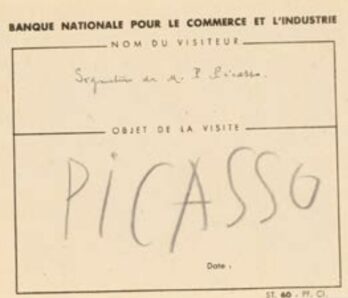
https://www.piasa.fr/fr/auctions/pablo-picasso-15-02#lots-list
(1)”Picasso the foreigner”. 2023. Farrar, Straus and Giroux
(2) “Histoires extraordinaires de l’art à l’Hôtel Drouot, de Vermeer à Louise Bourgeois”. 2023. Flammarion
Donating=Supporting

Support independent news on art.
Your contribution : Make a monthly commitment to support JB Reports or a one off contribution as and when you feel like it. Choose the option that suits you best.
Need to cancel a recurring donation? Please go here.
The donation is considered to be a subscription for a fee set by the donor and for a duration also set by the donor.


